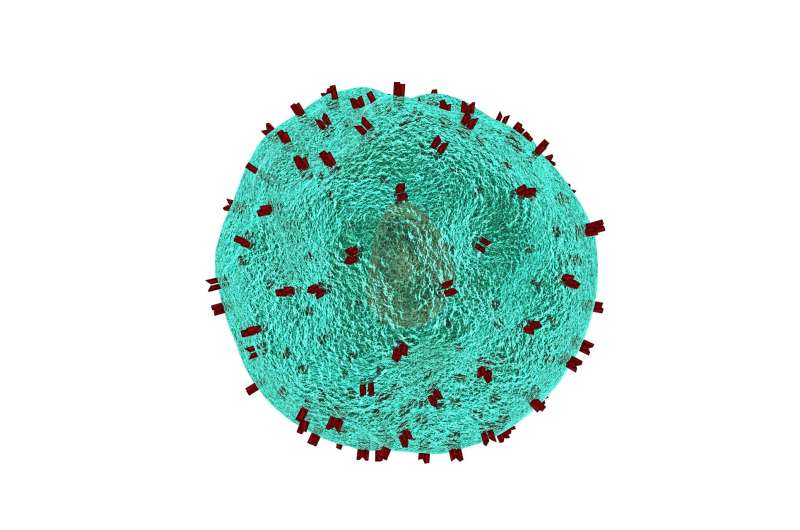This article has been reviewed according to Science X's editorial process and policies. Editors have highlighted the following attributes while ensuring the content's credibility:
fact-checked
peer-reviewed publication
trusted source
proofread
Find-and-replace genome editing with CRISPR: A promising therapeutic strategy

Severe combined immunodeficiencies (SCIDs) are a group of debilitating primary immunodeficiency disorders, primarily caused by genetic mutations that disrupt T-cell development. SCID can also affect B-cell and natural killer cell function and counts. Left untreated, SCID proves fatal within the first year of life.
The conventional treatment for SCID patients involves allogeneic hematopoietic stem cell transplantation (HSCT), but the challenges of finding compatible donors and potential complications like graft-versus-host disease (GVHD) pose significant hurdles in this approach.
A groundbreaking solution has emerged with the advent of genome editing (GE), particularly using CRISPR-Cas9 technology. This cutting-edge gene therapy research offers hope for many genetic disorders such as SCID. The CRISPR-Cas9 system creates site-specific double-strand breaks in the DNA, allowing for precise gene editing. The repair process can either disrupt a specific gene or correct it, potentially targeting nearly any gene in the genome. This development opens the door to therapeutic interventions for a wide range of genomic diseases.
One promising genome-editing approach, CRISPR-Cas9 homology-directed repair (HDR)-mediated GE, offers the potential for precise gene insertion. In certain subtypes of SCID, an alternative to HSCT can involve conventional CRISPR-Cas9 HDR-mediated gene insertion, but it carries inherent risks, especially in cases like RAG2-SCID. RAG2 is nuclease involved in DNA cleavage during lymphocyte development, and CRISPR-Cas9 HDR-mediated gene insertion may lead to uncontrolled RAG2 nuclease activity and harmful structural variations.
In response, researchers from Bar-Ilan University in Israel propose a novel replacement strategy, termed GE x HDR 2.0: Find and Replace. This approach, outlined in a paper published today in Nature Communications, combines CRISPR-Cas9-mediated genome editing with recombinant adeno-associated serotype 6 (rAAV6) DNA donor vectors to precisely replace the RAG2 coding sequence while preserving regulatory elements. This strategy can be applied also to other genes with hotspot regions for disease-causing mutations.
Dr. Ayal Hendel, of Bar-Ilan University's Goodman Faculty of Life Sciences, said, "Our innovation hinges on a crucial insight: to efficiently trigger CRISPR-Cas9 HDR-mediated GE for precise coding sequence replacement, it's essential to separate the distal homology arm from the cleavage site and align it with the sequence immediately downstream of the segment needing replacement. In this process, elongating the distal homology arm length in the donor is of paramount importance.
"By preserving endogenous regulatory elements and intronic sequences, our approach faithfully reproduces natural gene expression levels, thus reducing the associated risks of unregulated gene expression. This groundbreaking technique, which involves replacing entire coding sequences or exons while retaining critical regulatory elements, brings hope to patients with RAG2-SCID and holds promise for the treatment of various other genetic disorders."
More information: Nature Communications (2023). DOI: 10.1038/s41467-023-42036-5



















